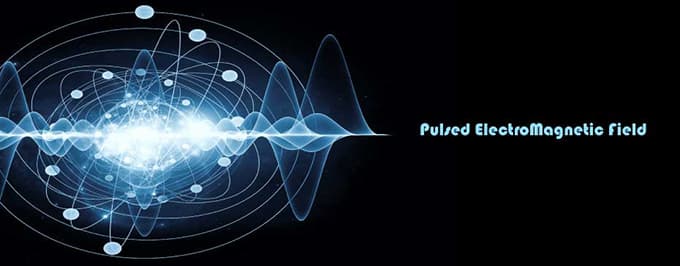Ultra-Low Radio Frequency Energy (ulRFE) vs Pulsed Electromagnetic Field Therapy (PEMF) – Similarities, Differences, and Advantages
Since you’ve obviously made it all the way to the Hapbee blog, you’re most likely already familiar with the fact that Hapbee is a truly revolutionary technical achievement. But what you may not know is exactly how a Hapbee works, and why we believe the technology (ulRFE) powering the Hapbee is superior to the competition.
What is ultra-Low Radio Frequency Energy (ulRFE)
How Does it Work, and Why is it Better?
Two decades ago, the US military developed an ultra-sensitive monitoring and recording technology, called the Superconducting Quantum Interference Device (SQUID), to monitor enemy submarines underwater. Once publicly available, scientists at Emulate Therapeutics, Hapbee’s parent company, experimented with the technology, with the knowledge that every compound and chemical emits a unique magnetic signal. Working in a laboratory setting, they found they were able to use the SQUID system to precisely measure magnetic signatures – the magnetic field that all substances on earth emit.
Since each element, compound and chemical has a unique signal and measurement, the scientists set out to see if recreating these signatures could have a similar effect as the compounds and chemicals themselves. The preliminary results were extraordinary; by utilizing simulations, the effects were found to be largely similar to the same compounds and chemicals -- from pain management to antidepressants to caffeine and sleep aids -- but without any need to actually ingest the substances themselves. Moreover, ulRFE is known to operate at the lowest end of the electromagnetic spectrum, similar to that of a toaster if you were standing thirty feet away, so by all common definitions, a Hapbee wearable can be considered safe for personal use.
After extensive research, resulting in more than thirty-five current United States patents, Emulate created the Hapbee, a portable, safe wearable device, to allow consumers at home to enjoy the benefits they desire, safely and easily.
What is Pulsed Electromagnetic Field Therapy (PEMF),
How Does it Work, and Why is it Inferior?
As described above, all compounds and chemicals emit unique magnetic wave signatures, and this includes the human body itself. If you think of cells in the human body as batteries to conduct and hold this charge, younger, healthier cells can hold a full normal charge, while the toll chronic illness takes on the human body can cut that in half, and cancer patients can drop as low as merely a quarter of the charge of a fully healthy patient. The lower the inherent “voltage” in a cell, the more susceptible it will be to disease, as serious diseases like cancer cannot thrive in highly charged cells. An example of this would be the human heart, which contains the highest-charged cells in the body. As a result, cancers of the heart are extremely rare.
Taking that into account, Pulsed Electromagnetic Field Theory (PEMF) attempts to recharge cells, using it to shoot pulses electrical charges directly through them, which has been shown to have a regenerative effect. While PEMF has been shown to help stimulate healing broken bones and other damaged tissue, it can have drawbacks not typically seen in ulRFE. These include but aren’t limited to a decreased blood pressure, fatigue, loss of energy, disturbed sleep patterns, and temporary increases in levels of pain.
Hapbee Uses ulRFE
Despite the potential drawbacks, some other wearable devices utilize the PEMF, rather than ulRFE technology. Hapbee, on the other hand, uses ulRFE exclusively by choice, as our research has shown it to be not merely quite effective, but delivers superior results in the safest manner possible. Given Emulate’s extensive proprietary research, and patents in the field, other competitive products don’t have the ability to properly and safely use ulRFE, which means Hapbee is easily the best option in the industry.



